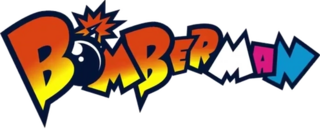
Bomberman is a video game franchise created by Shinichi Nakamoto and Shigeki Fujiwara, originally developed by Hudson Soft and currently owned by Konami. The original game, also known as Bakudan Otoko, was released in Japan in July 1983 and has since spawned multiple sequels and spin-offs released on numerous platforms, as well as several anime and manga adaptations.
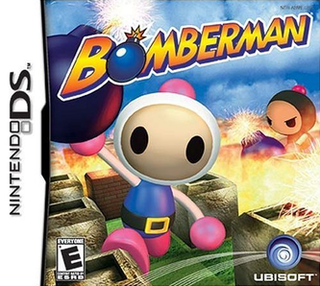
Bomberman is a 2005 video game developed by Racjin for the Nintendo DS. It was released by Hudson Soft in Japan on May 26, 2005, and published worldwide by Ubisoft. The game is notable for its chibi art style, previously seen in the Bomberman Land series.
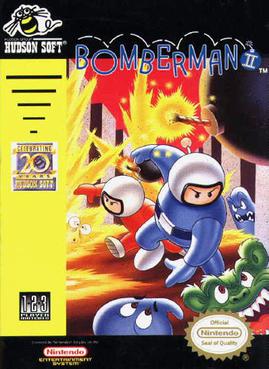
Bomberman II, released in Europe and Australia as Dynablaster, is a maze video game developed and published by Hudson Soft for the Nintendo Entertainment System originally in Japan and Europe in 1991 and later in North America in February 1993.

Bomberman is a maze video game developed and published by Hudson Soft. The original home computer game Bomber Man was released in July 1983 for the NEC PC-8801, NEC PC-6001 mkII, Fujitsu FM-7, Sharp MZ-700, Sharp MZ-2000, Sharp X1 and MSX in Japan, and a graphically modified version for the MSX and ZX Spectrum in Europe as Eric and the Floaters. A sequel, 3-D Bomberman, was produced. In 1985, Bomberman was released for the Nintendo Entertainment System. It spawned the Bomberman series with many installments building on its basic gameplay.

Bomberman Jetters is an action game for the Game Boy Advance, GameCube and PlayStation 2, and part of Hudson Soft's Bomberman series. The game builds on the gameplay style established in the previous Bomberman series entry, 2002's Bomberman Generation, and features characters and settings from the 2002 anime series Bomberman Jetters. The GameCube version utilizes cel-shaded graphics similar to those of Bomberman Generation, while the PlayStation 2 version does not.

Super Bomberman 5 is a video game released by Hudson Soft in early 1997. It is the fifth installment of the Super Bomberman series and the final Bomberman game to be released on the Super Famicom. The game was released in two variations: a standard cartridge and a gold cartridge, which was sold through CoroCoro Comic. The gold cartridge included extra maps in battle mode.

Super Bomberman 2 is a video game developed by Produce! and Hudson Soft and released on the Super Nintendo Entertainment System. It was released in Japan on April 28, 1994, in North America later the same year, and in Europe on February 23, 1995.

Bomberman: Panic Bomber is a 1994 puzzle video game developed and published by Hudson Soft for the PC Engine on December 22, 1994. It was later released for the Neo Geo, Super Famicom, Sharp X68000, FM Towns, NEC PC-9821, Virtual Boy, and PlayStation Portable. It saw a re-release for the Wii and Wii U's Virtual Console services. Panic Bomber is a falling block game with the players' goal being to clear matching blocks using bombs, ensuring that their screen does not fill and that their opponents' screens do. It received mixed to positive reception, identified as a decent game by multiple critics. It has been compared to the falling block puzzle game Tetris. The Virtual Boy version received a mixed reception for its handling of the platform's visual capabilities.

Bomberman Tournament is a game in the Bomberman series for the GBA. The game contains a multiplayer battle mode between linked Game Boy Advances. The player and up to three others can compete in any of the game's eight multiplayer battle arenas, each of which has its own unique gameplay twist.
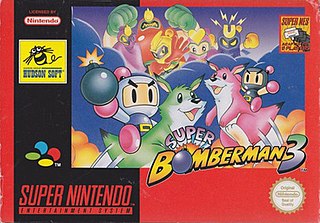
Super Bomberman 3 is a game released for the Super Nintendo Entertainment System in 1995. It is the third installment in the Super Bomberman series, and the third Bomberman game to be released for the system. Up to five players can play at the same time. The game was released in Japan and the PAL region, but not in North America due to the closure of Hudson Soft USA.

Super Bomberman is an action, maze game, part of the Bomberman series, released for the Super NES in 1993. It is the first in the series to be released in Europe keeping the Bomberman title instead of being called Dynablaster or Eric and the Floaters.

Bomberman Land 2: The Biggest Theme Park in Game History is a 2003 video game developed by Racjin and published by Hudson Soft that was released in July for the PlayStation 2 and GameCube. Part of the Bomberman franchise, it is the sequel and the second game in the Bomberman Land series.
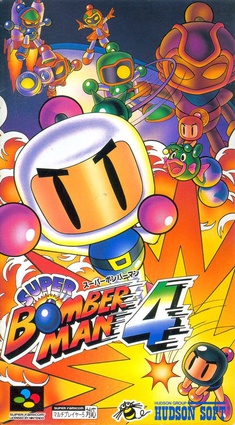
Super Bomberman 4 is an action-party video game developed by Produce and published by Hudson Soft. It was developed for the Super Famicom, released on April 26, 1996, in Japan. Part of the Bomberman franchise, it is the fourth installment of the Super Bomberman series.
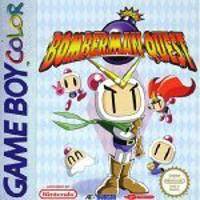
Bomberman Quest is an action role-playing game. The player takes the role of Bomberman, who has to defeat monsters and collect items to defeat the Commander bosses of each area. Bomberman Quest marks the departure of veteran composer, Jun Chikuma.
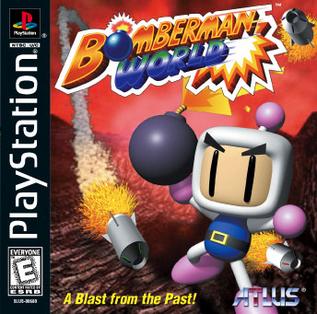
Bomberman World is a maze action video game developed and published by Hudson Soft for the PlayStation. It is part of the Bomberman series. The game was also re-released for PCs in 2002 alongside the TurboGrafx-16 version of Bomberman and Bomberman '93 as part of a compilation disc titled Bomberman Collection.

Bomberman 64 is a Japanese Nintendo 64 game released in 2001. It was the final Nintendo 64 game to be released in Japan. The game features four distinct gameplay modes, each with unique gameplay, based on different games in the Bomberman franchise.

Bomberman, also known as Dyna Blaster in Europe, is an action-maze video game originally developed and published by Hudson Soft for the PC Engine in Japan on 7 December 1990 and later in North America for the TurboGrafx-16 by NEC in 1991. Belonging to the Bomberman franchise, it is a re-imagining of the first game in the series starring White Bomberman on a quest to rescue Lisa, the kidnapped daughter of his inventor Dr. Mitsumori, from the castle of Black Bomberman while defeating evil monsters and villains that work for him. The game was later ported to home computers, each one featuring changes compared to the original version. Conversions for other platforms were in development but never released. The title garnered positive reception from critics since its initial release on the PC Engine/TurboGrafx-16 and later on home computers.
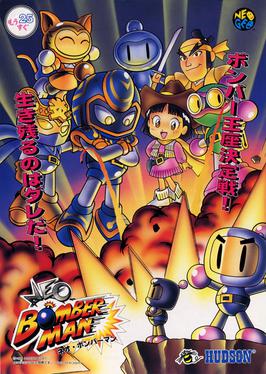
Neo Bomberman is an action-maze arcade video game developed by Produce! and published by Hudson Soft for the Neo Geo MVS on May 1, 1997. It is one of two games in the Bomberman franchise that was released for the Neo Geo platform, the first being Panic Bomber, and the only one to retain its traditional top-down gameplay. It was released for the Neo Geo MVS (arcade) and has not received a home console release to date. It was the last original Bomberman title to be released for arcades until Konami's Bombergirl in 2018.

Pocket Bomberman is a platform video game developed by Hudson Soft and originally released for the Game Boy in 1997. It was re-released as a launch title for the Game Boy Color in 1998.
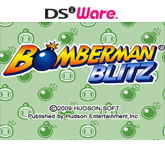
Bomberman Blitz is a DSiWare game developed by Hudson Soft for the Nintendo DSi. It was released on October 7, 2009, in Japan, and in November of the same year in Europe and North America. The game was available for the Nintendo 3DS via the Nintendo eShop until the shop's closure in March 2023.





















